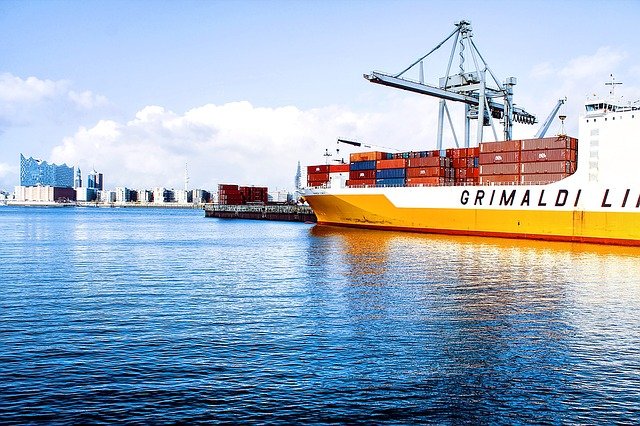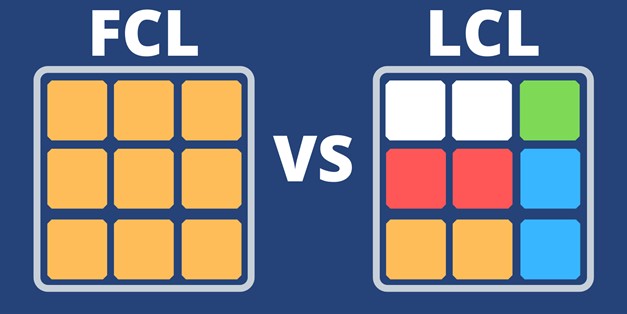Sea freight is always compared to other shipping methods when someone has a tendency to export goods. In Vietnam, ocean shipping could be considered as the backbone of international trade and the global trade, and the same goes for the world. Why is this method chosen over the others and what do we need to know when exporting goods by ocean freight? Go through this blog post to have the answers for these questions.
Check out our main points in this post here:
1. What is ocean freight?
Ocean Freight is a method of transporting a large amount of goods by sea via standard shipping containers. Due to the fact that Vietnam has conditions facilitating ocean shipping, this method has become the most used one when shipping internationally. In fact, according to the Representative of Vietnam Maritime Administration, sea freight has carried out more than 90% of international shipping in Vietnam, making it an important shipping solution for many foreign and domestic businesses. Furthermore, Vinamarin also states that there is an estimated increase of 16% in export commodities through Vietnam seaports in the end of 2019.

Ocean Shipping is the most common method in Vietnam’s international transport
2. Why choose sea freight instead of other methods?
It is absolutely necessary to consider which one is the best transport way for your freight. Sea freight seems slow compared to the other global transport like international courier services, standard air freight or express air freight. Nevertheless, this method has its own huge competitive advantages, making it more attractive than other transports. Let’s check out its upsides below.
Cost
It is apparent that cost is always an issue to be carefully considered when choosing a shipping method. Compared to the cost of shipping by air, ocean freight completely wins the battle of cost especially with larger shipments. However, shipping by sea costs you more time than air freight does, which means that you should choose air shipping if time is your first priority.
Capacity
The second advantage that ocean shipping offers exporters is its ability to ship heavy or large loads. In fact, if you are going to ship goods weighing more than 150kg or 2 CBM (Cubic Meter), air freight will be extremely expensive, and transporting by sea now is an optimal choice for you.
Environmental friendliness
Environmental issues have received increasing public attention in recent years. When it comes to environmental protection, shipping by sea will be the better option.

Carbon emissions comparison between international forms of transporting goods. Source: World Shipping Council
According to World Shipping Council, maritime shipping is the world’s most carbon-efficient transport method. In fact, it is far more efficient than road and air freight, which releases carbon dioxide most to the environment.
Nevertheless, due to a number of factors such as speed, types of products, and so on, it leaves you no choice but choosing other methods over sea freight. For this reason, in order to choose which method is the best one for your freight, ask yourself 5 questions below:
- How much money are you willing to spend on transporting your freight?
- How quickly do your goods need to be dispatched?
- Is reaching your destination in time your first priority in shipping goods?
- Do you care much about reducing CO2 footprint and protecting the environment?
Or you could check out factors that affect your decision on methods of dispatch at Sourcing from Vietnam: An Ultimate Guide for International Shipping.
3. International sea freight services: LCL and FCL
In this method, 2 main concepts are applied when shipping Vietnam’s goods, encompassing FCL (Full Container Load) and LCL (Less than a Container Load).

FCL vs LCL when shipping by sea
FCL (Full Container Load) refers to a container shipment which is used for only one consignee. This means that this carrying container doesn’t have to share capacity with goods from other shippers. In particular, the container in this type of shipment is sealed at origin and just opened at the destination, thus offering a high security and minimum handling for products.
LCL (Less than a Container Load), in contrast, is a container shipment in which exporters share the container capacity with other shippers. This concept allows goods to be shipped economically but less secure and chances are that you have to wait for 1-2 days until the container is fully loaded.
4. Process for Shipping by Sea
Having a shipping agent is highly recommended in this process since the import and customs processes are relatively complicated. The shipping company can help you to manage risks and ensure a smooth process.
A number of steps should be taken into account when shipping by sea with a transport agent:
- Choose a trusted shipping agent.
- This agent will collect goods from your supplier.
- Goods are transported to the port and pass through customs in the origin.
- Goods can be loaded into your own container (FCL), or a shared container (LCL), then it will be put into a cargo ship.
- Goods will be released after passing the destination’s customs and all duty and taxes are paid.
- Goods are delivered to you now.
5. Vietnam Seaport System
Thanks to the advantage of a long coastline of 3,260km, Vietnam has developed a system of international seaports throughout the country, which facilitates the process of shipping by sea from Vietnam. Vietnam has 114 sea ports in total with 14 of them are large, playing a key role in economic growth. According to the Ministry of Transport, there is a significant development in both the scale and capability in recent years.

A system of international seaports have been developed in Vietnam
Take a look at the three most modern seaports for each region in Vietnam:
Northern Vietnam – Hai Phong Seaport
Hai Phong Port is the most modern seaport for international container traffic in the North of Vietnam now. In fact, it is well-equipped with advanced facilities and safe infrastructure, which are suitable for multimodal and international trade.
Chua Ve and Tan Vu Terminals are 2 of 5 Hai Phong Port branches. These two branches have a large area of container yard which is more than 700,000m2 in total. Besides, since Hai Phong Port is the seaport handling the largest traffic volume in Northern Vietnam, this port can receive 10 million tons of throughput per year.
Central Vietnam – Da Nang Port
Da Nang Port is the major port in Central Vietnam and the third largest one in Vietnam’s seaport list. This port has three berth areas, including two main terminals (Tien Sa – Son Tra and Song Han) and a freight warehouse (Tho Quang Station). Not to mention Song Han and Tho Quang, Tien Sa terminal is able to receive tankers which are more than 40,000 DWT and container ships of up to 2000 TEUs, making this port the busiest one in Central Vietnam.
Southern Vietnam – Cat Lai New Port
Recently, Cat Lai Port has achieved a grand milestone of being the largest and most modern international terminal in Vietnam. The throughput at this port accounts for more than 90% of market share in the South of Vietnam.
According to the statistics that Vietnam Seaports Association provided in 2019, Cat Lai Port handled more than 5 million TEUs of containers, making it a key terminal in Vietnam’s seaport system nowadays.
Below is the list of other international seaports in Vietnam
- Vung Tau Port
- Van Phong Port
- Quy Nhon Port
- Quang Ninh Port
- Cua Lo Port
- Dung Quat Port
- Chan May Port
Viego Global – Your trusted sourcing partner in Vietnam
Are you going to source commodities from Vietnam, an Asia sourcing hub with great potential? Are you faced with any problems when sourcing from Vietnam? With professional experience and presence at factory location, Viego Global thoroughly understands and has the capability to help you break through all the barriers as well as successfully do business in this country. Just leave your comment below or click HERE for further support!